Cavan: Ireland's Lake County
With an amazing 365 lakes, is one of those places in Ireland that is not exactly on every tourist’s radar when it comes to exploring Ireland.
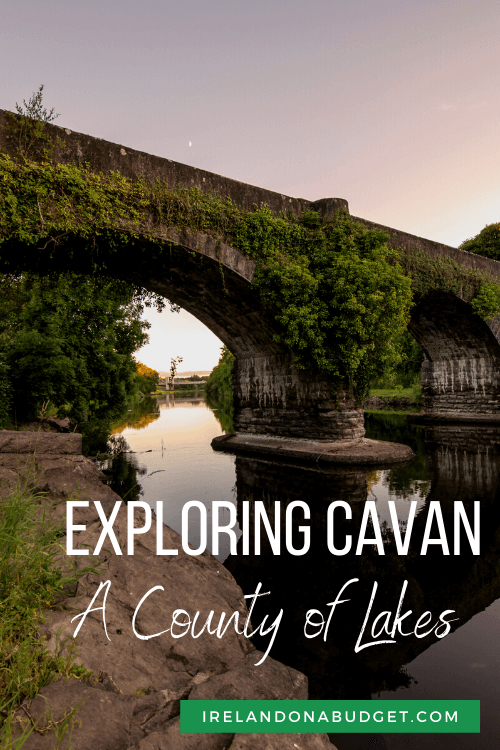 This page contains affiliate links and I may earn compensation when you click on the links at no additional cost to you.
This page contains affiliate links and I may earn compensation when you click on the links at no additional cost to you.
And that’s unfortunate because the county has a lot to offer, including a variety of lakes – apparently one for each day of the year – as well as a landscape that includes many bogs, streams, and drumlins.
In fact, you could call it a heaven for boaters or anglers and equally attractive for those who like to explore on foot.
The county is actually part of the province of Ulster but is located in the Republic of Ireland.
Cavan is approximately 113 km (70 miles) from Dublin and 98 km (60 miles) from Belfast.
Read on for more information on Cavan: Ireland's Lake County.
Cavan Town
Cavan is the county town of County Cavan.
The town was founded by Giolla Iosa Ruadh O’Reilly, a powerful Gaelic lord in the area. In fact, the O’Reilly clan features largely in Cavan’s history since they ruled the entire region, known at the time as East Breifne.
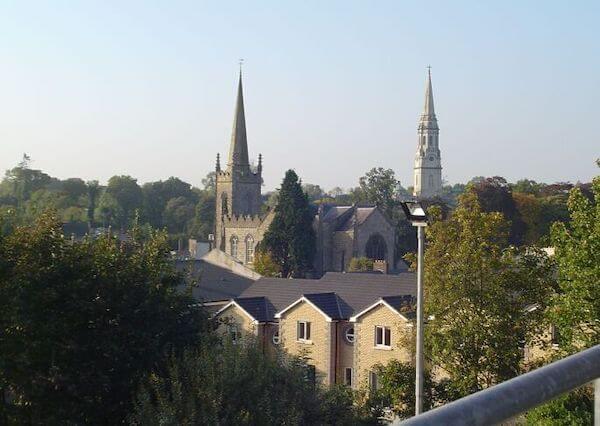
A castle was built by the O’Reillys in the 14th century overlooking the town center, but that no longer exists as it was burned to the ground by the British in 1487.
The imprint of the medieval town can be seen in the areas of Abbey, Bridge, and Main Streets.
In 2010, 2011, and 2012, the town hosted the All Ireland Fleadh Cheoil, the first time the competition had returned to the town since 1954.
There's much more to Cavan than the town itself. Let's take a journey through some of Cavan's most popular attractions.
Try an Ancestry.com Membership for Free (14-Day Trial)
Marble Arch Caves & Global Geopark
This amazing UNESCO global geopark is located in parts of County Cavan but also lies in nearby County Fermanagh.
The region’s landscape was formed millions of years ago, which has resulted in an area that boasts extensive valleys, lakes, and drumlins.
In the uplands portion of the geopark, you’ll find an area that contains forests, a blanket bog, and a karst landscape that formed what is known today as the Marble Arch Caves.
The caves are regarded as a world-class natural attraction, with an entrance to the attraction in Co. Fermanagh.
The area is also home to a variety of historic sites, including prehistoric tombs, Iron Age forts, early Christian monasteries, and castles.
There are many attractions in the geopark that are located in County Cavan.
They include:
-
The Cuilcagh Legnabrocky Trail
Otherwise known as “The Stairway to Heaven,” the Cuilcagh Legnabrocky Trail located in the Cuilcagh Mountain Park attracts not only international visitors but Irish people eager to experience the beauty of this unique place.
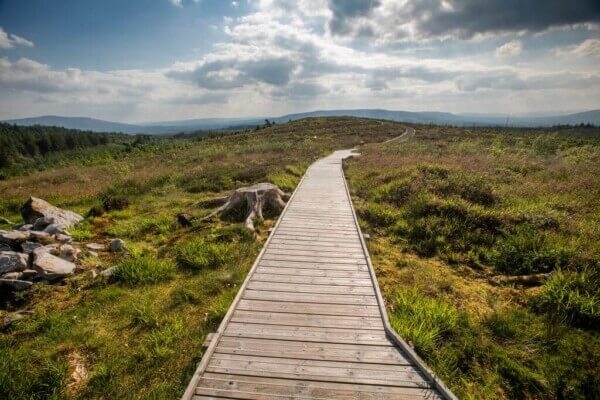
The 7.4-km walk (4.5 miles) is partly on a gravel track, but much of it is also on a boardwalk, which makes the steady incline to the face of the mountain a little easier.
The route is quite remote, so it’s best to bring plenty of water and snacks before you head out.
Be sure to wear the proper footwear and dress in layers as always while here and on any other hiking trails in Ireland.
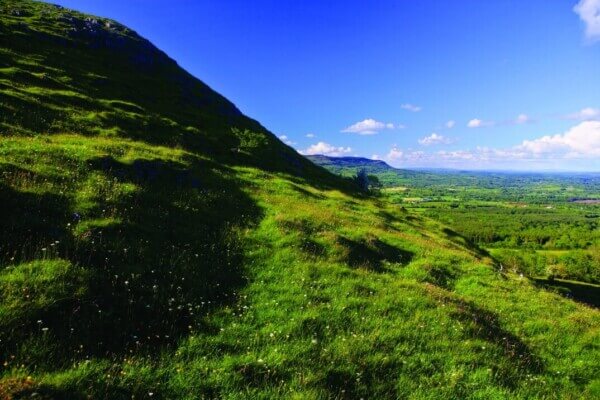
Once you get to the top, you’ll discover the remains of a burial tomb from the Bronze Age.
From the top, you’ll also have a bird’s eye view of the surrounding countryside, including Lough Atona, a lake nestled at the foot of the mountain that was carved by a glacier during the last Ice Age.
Since this is designated an Area of Special Scientific Interest, it is recommended that you treat the mountain with respect by not littering.
-
The Cladagh Glen Walk
This is a waymarked linear route that will take you through the beautiful Cladagh Glen National Nature Reserve.
If you follow the river, you’ll find yourself walking through a narrow limestone gorge and into a thickly covered ash woodland, which is actually quite rare in Ireland these days.
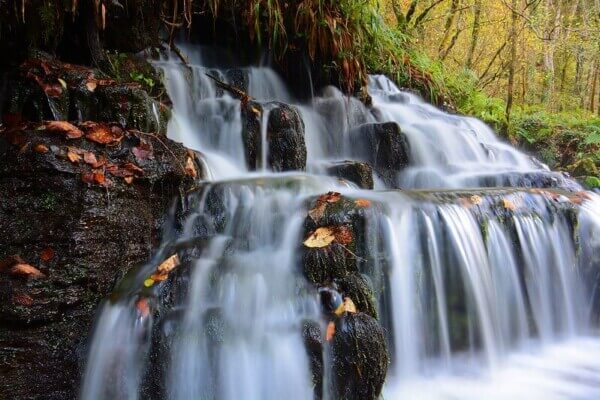
This is a fragile landscape, so walkers are advised to tread carefully and not leave any garbage behind. There are lots of beautiful plants and trees to see in this quiet spot, as well as a variety of wildlife.
-
Castle Saunderson
The Saunderson family acquired the original castle during the Plantation of Ulster. The original one belonged to the O’Reillys of Breffni and was formerly known as Breffni Castle.
Robert Sanderson, who supported William of Orange, the winner of the infamous Battle of the Boyne, inherited the castle from his father in 1676.
The castle you see today dates from about 1840. It was destroyed by a fire in 1900 but was rebuilt.
It was used for a time in the 1970s as a hotel, but that, too, was damaged by a fire.
An international scouting center opened adjacent to the castle in 2012.
Cavan County Council launched a heritage trail there in 2017 that gives visitors access to the original walkways around the castle.
Along the way, you can learn about the castle and the family who lived there, including Colonel Edward Saunderson, founder of the unionist movement in Northern Ireland.
Killykeen Forest Park
If you want to get a sense of Cavan’s network of lakes, you should head to Killykeen Forest Park, a sprawling 240-hectare forest that straddles Lough Oughter, a popular lake for anglers.
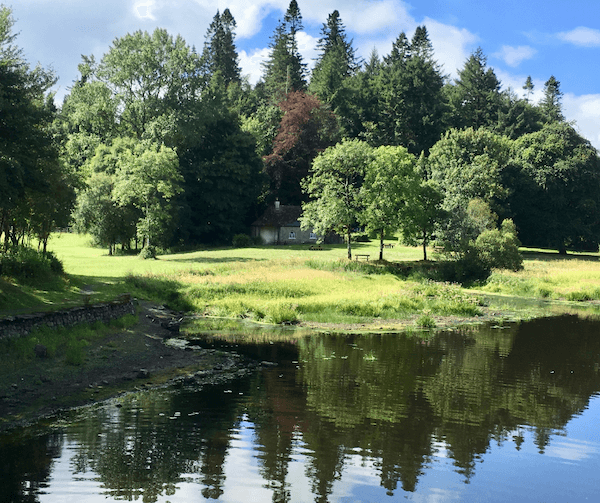
There’s an impressive network of walks through the atmospheric forest that also lends itself to picnicking, cycling, and swimming.
Clough Oughter Castle
Adding to the adage, Cavan: Ireland's Lake County is the beautiful Lough Oughter.
Many of the islands in Lough Oughter were once “crannogs” (fortified, artificial islands built by the ancient Irish).
The most impressive one is home to the 13th-century circular structure known as Clough Oughter Castle.
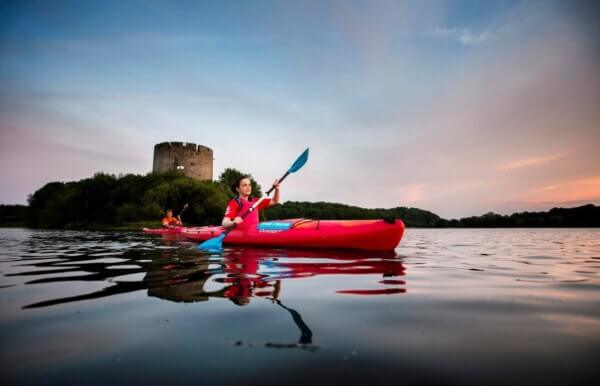
The castle was once owned by the Gaelic clan, the O’Rourkes but eventually fell to the Anglo-Norman William Gorm de Lacy.
In 1233, the rival Gaelic clan, the O’Reillys, took it over and completed its construction.
At one time, it was the stronghold of Owen Roe O’Neill before being destroyed by Cromwell’s army in 1653. O’Neill died at the castle in 1649.
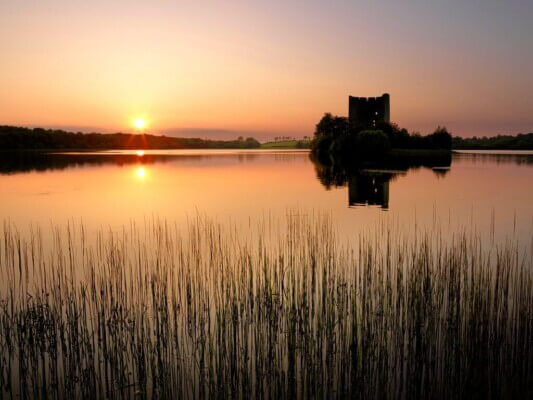
You can take a guided boat tour or rent a canoe or kayak to this iconic location that was a source for countless artists in the 18th and 19th centuries and in more recent times for photographers.
Contact the Cavan Adventure Centre for more information.
There’s a small dock on the island where you could leave your canoe or kayak and weather permitting, you could explore the castle further.
Get Wifi in Ireland with Wifi Candy – take 10% off with code IOB2024
Cavan Burren Park
While the Burren in Co. Clare is well known to international visitors, the Cavan Burren Park doesn’t have the same name recognition.
And that’s a shame because it is equally as captivating.
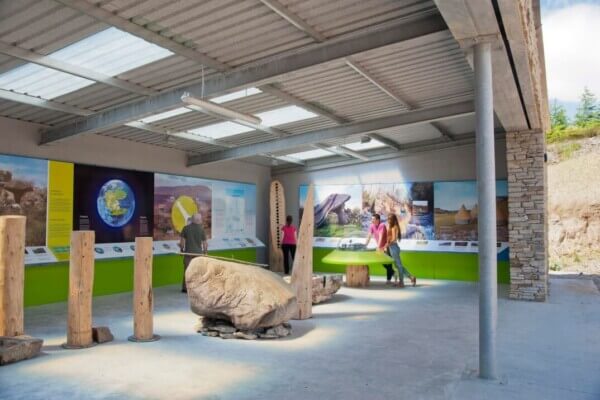
Be sure to stop at the interpretive center first, where you’ll discover how this unique environment was shaped 350 million years ago in a shallow tropical sea during the Carboniferous Period.
The exhibits will prepare you for what lies ahead on the walking trails located in the prehistoric park.
Expect to see huge boulders of sandstone that sit on pedestals of limestone created during the last Ice Age some 13,000 years ago, among other ancient monuments.
Farming communities settled in the park as early as 4,500 B.C.
Evidence of their existence can be found in the remains of old field walls as well as other monuments like the Giant’s Grave wedge tomb, which was used to bury their dead.
The park is located close to the village of Blacklion on the Cavan/Fermanagh border. It is open year-round. There is no admission fee.
Dun a Ri Forest Park
About 50 km (31 miles) east of Cavan town is Dun a Ri Forest Park, a 565-acre stretch of land where the mythical figure Cuchulainn is said to have camped at night while engaged by day in conflict with the army of Queen Maeve of Connaught.
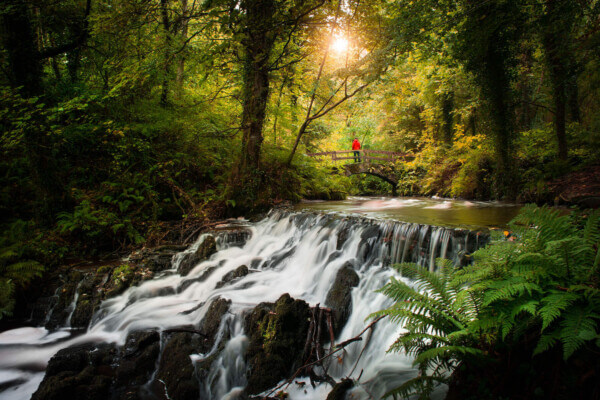
Adding to the enchanting nature of the forest is the belief that from the 3rd through the 6th centuries, the forest and surrounding area were occupied by the Gailenga, a warlike people who were responsible for guarding the Kingdom of Tara in nearby County Meath.
There are several attractions to be found within this woodland area, considered one of Ireland’s finest forest parks.
Some of them include:
- The Wishing Well, most likely once a holy well;
- Cromwell’s Bridge, where Oliver Cromwell is said to have crossed on his way to attack the O’Reilly castle at Muff a few miles away;
- Cabra Cottage, once the home of the Pratt family who owned the estate where the forest is located, as well as the scant remains of Cabra Village, which was dismantled to make way for the nearby community of Kingscourt;
- Sarah’s Bridge, constructed in memory of Sarah Mountmorris who married into the Pratt family. Legend has it that Sarah fell into the river and drowned while meeting her secret beau on the bridge. In 2009, a local man took a photograph of his friends on the bridge, and sometime later when he looked at the digital image, he saw another image of a woman with long dark hair.
This is an ideal place for walking as there are at least four walking trails between 1.5 and 2 km in length. There’s lots of wildlife in the area, and you may spot stoats, rabbits, and the Irish hare while you’re there.
There are plenty of sculptures to enjoy in the park, including those of a fox, hare, badger, otter, frog, the Pine Marten, as well as six sculptures called “The Red Coats” symbolizing the British troops who occupied the forest around the year 1800.
The work of art is also symbolic of Northern Ireland’s six counties under the control of the British.
Explore Castles & Countryside on an Aer Lingus Vacation
Deerpark Forest Park, Virginia
The enchanting Deerpark Forest is located on the shores of Lough Ramor on the outskirts of Virginia, a popular tourist town in Cavan.
The forest was created in the 1800s by Thomas Taylor, also known locally as Lord Headfort.
Taylor created a series of paved walkways that you can still travel today, in addition to importing trees from all across the world, including California Redwoods.
Be sure to look out for the fairy doors located throughout the forest.
Cavan County Museum
Don’t leave Cavan without visiting this interesting museum that explores the unique heritage of the county.
The museum’s artifacts include items from the Stone Age right up to the 20th century.
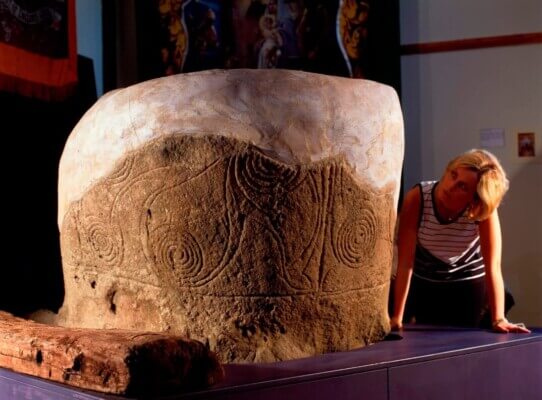
One of them is the Killycluggin Stone, a highly decorated Iron Age monument that is considered a “cult stone.”
Other examples of Cavan’s past can be found in a selection of “Sheela-Na-Gigs” (sculptures of naked women); spearheads; bog butter, and brooches.
Perhaps the most popular aspect of the museum is the World War I Trench Experience, the largest outdoor replica trench in Ireland and the U.K.
The attraction was created in 2018 to mark the centenary of World War I when between 35,000 and 49,000 Irish people died.
Part of it is an exhibition titled, “Road to War: Path to Reflection,” which details the lives of Cavan men from different religious backgrounds who died on the same day during the war.
The museum also houses several other exhibitions.
They include one on the history of the GAA (Gaelic Athletic Association) in County Cavan; the Great Famine exhibition, The Farnham Gallery, and the Percy French Gallery honoring the famous Cavan native and songwriter who penned such songs as “Come Back Paddy Reilly to Ballyjamesduff,” among other tunes.

